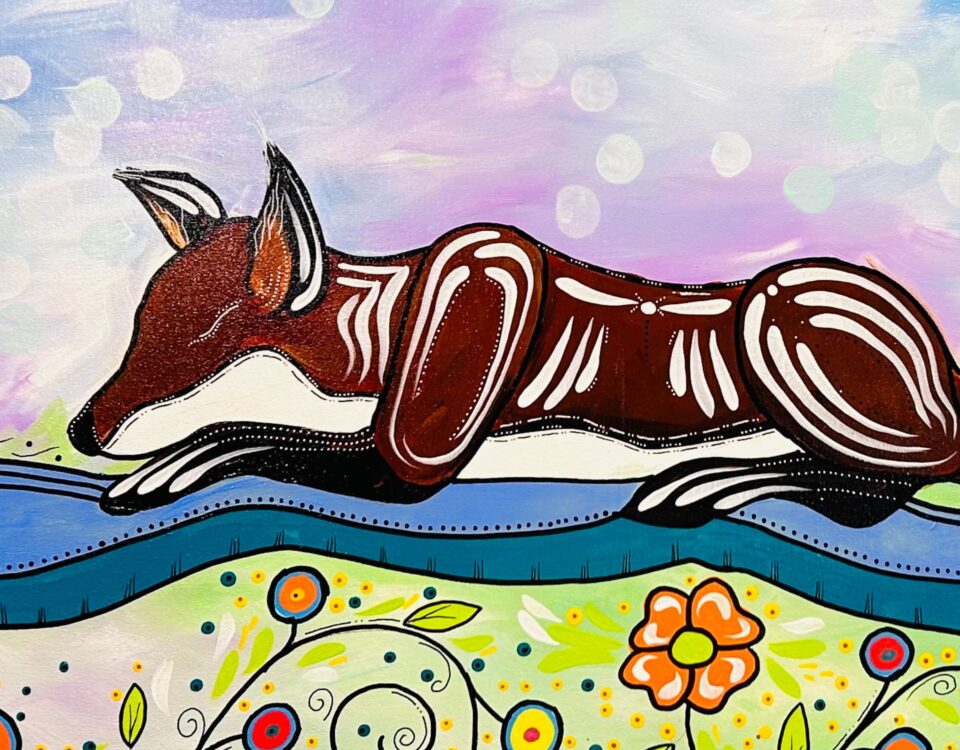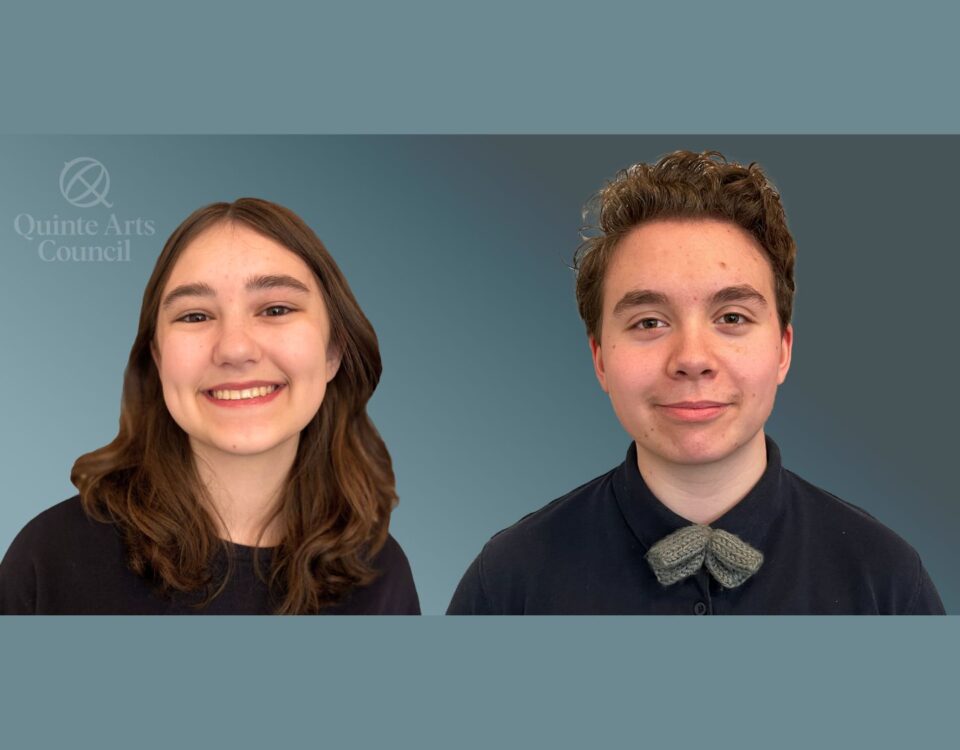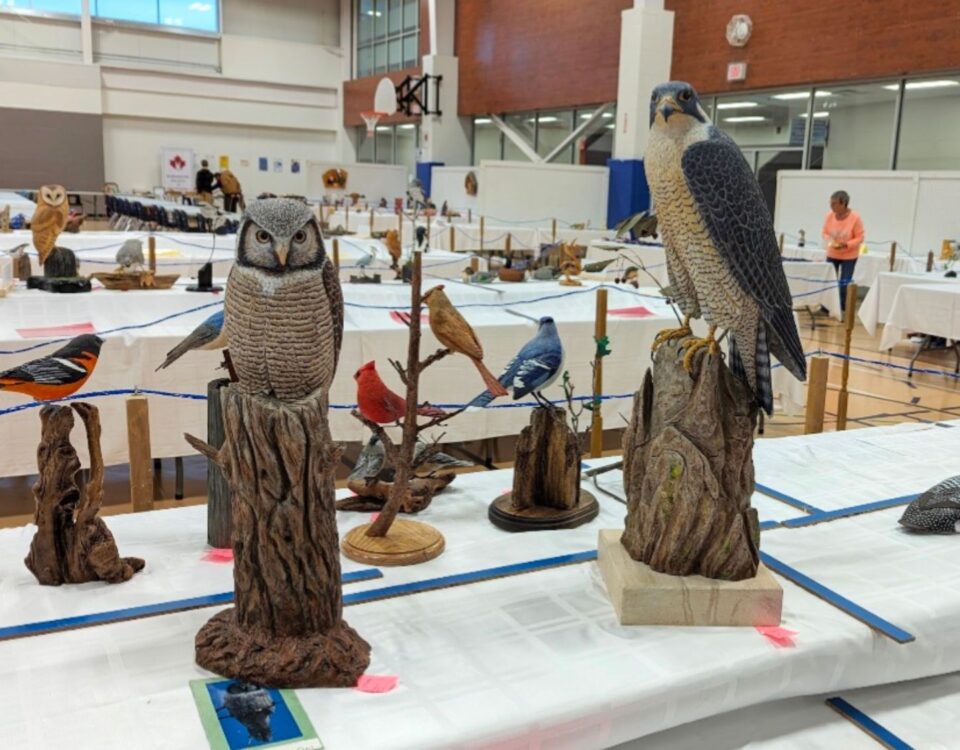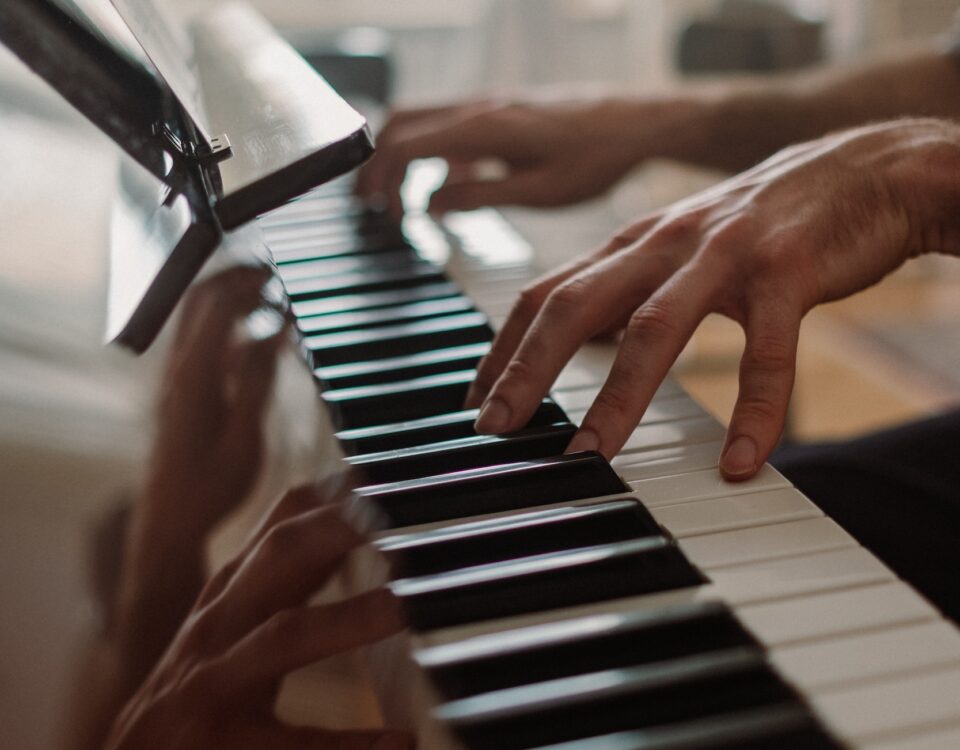Embracing Heritage Through Art: Angela Wiggins’ Spirit in Nature
Kodie Trahan-Guay

Spirit in Nature opens September 5th from 4-6pm at the Quinte Arts Council (QAC) Cultural Hub, 36 Bridge St. East, Belleville and runs until October 31st. Spirit in Nature is a show by Angela Wiggins and is the culmination of a life spent exploring visual art and family heritage.
Angela Wiggins is Anishinaabe (Ojibwe) by blood, Kanyen’kehà:ka (Mohawk) by association, all of Turtle Island in spirit. Wiggins dreamed of the arts since she was a small child. She danced and sang but found visual arts connected to her more than any other discipline.
As her grandfather was a survivor of a Spanish Residential School, Wiggins was cut off from her heritage. Her family didn’t know their history, heritage or clan. She was asked by a friend to teach three art classes and realized her art was connected to her heritage. She began to research Indigenous art and found it hit a part of her soul.
“I would study pieces of art, carvings, dance, feather art, totem poles on the coast. I would try to dissect each piece to understand how they created it. I think, because I had no foundation, I found roots in every clan, each style. I learned to respect the art for what it was; Beautiful, and full of meaning.”
Wiggins works primarily in acrylics. Her work is a multi-layer approach and each layer must dry completely before she can move on so she doesn’t destroy what has come before. She says that while her work may appear simple, it is a lot of precision work to add in all the details. Her focus is on landscapes and wildlife, with added colour, movement, linework and patterns. She says she doesn’t begin with a plan, she dives in and begins painting letting spirit be her inspiration.
“I close my eyes and ask spirit to guide me. I believe the earth has a strong spirit. That flows onto the canvas as I paint. If I did not have a strong belief in spirit, I don’t know if I could create the way I do. I see an energy inside of an animal or a scene, and I am compelled to recreate it in a way that will promote joy, and healing.”
Wiggins has brought on Ashely Foley to help her look for grants to further her artistic ambitions, and to free up time so she can spend more of it learning about different Indigenous Cultures. Wiggins wants to use her work to help benefit other Indigenous artists but knows she needs to reach a certain level of recognition before she will be taken seriously. Not knowing enough about her own culture and heritage has been one of Wiggins biggest challenges as an artist.
“The biggest challenge I have had to overcome is self acceptance. I was afraid, and I think I still am, of not being accepted as an Indigenous artist because I never had a chance to learn about who I am. I felt like an imposter. I have had to work hard, harder than I have at any other art form, to create work that I felt respects the heritage of what/who I am trying to represent. I work hard with every piece I create to ensure that I not only show respect for my subject, but to ensure I am respectful of the style of art I work within, and ensure I am grateful to spirit and the creator for my gift.”
She wants to encourage emerging Indigenous artists who are exploring their own cultural identities through their work. Her biggest advice to others is to find your own voice.
“Take the time to experiment and create. Find what resonates with you. It does NOT have to be the same as any other Indigenous artist. It just has to be honest.”
Spirit in Nature is work Wiggins has created over the past year. She believes every artist evolves throughout their life and it takes a while for artists to find their place in their work. This is her year. The passion in the way she uses paint, her impressionistic backgrounds, the bold colours and line work are present in each piece of the show. The heart of her pieces are their spirit.
“Spirit is the basis for all of my work. When you see the eagle and its strength in one painting, or the owl as it peers over its shoulder to see you, the otter swirling deep under water, or just the tree eking out an existence among the rocks. If you really look at the work, you can feel how the spirit in nature can relax your weary soul and give you life! I wanted the beauty and the energy of each piece to come alive.”
Spirit in Nature opens September 5th from 4-6pm at the Quinte Arts Council (QAC) and runs until October 31st.
The full interview:
- Can you share more about your personal journey of discovering and connecting with
your Indigenous roots through art?
I have no family that really knows about our history, our heritage, and for years, even what clan we were from. I was asked by my friend Joe Brown to teach 3 art classes, one for each of the clans of TMT. I explained I didn’t have enough experience to do that. He told me it was time for me to get that experience. I felt like an imposter as I began to draw and paint. I suddenly felt the wave come over me…. Something I had never experienced. I realized that all of the “doodling” I had done all my life is connected to my heritage. I began to research indigenous art and found Norval Morriseau. His life, what he said, what he painted, all seemed to hit a place in my soul I never knew was there. I knew then, something was about to change.
- Have you always wanted to be an artist?
It has always been my lifelong dream. Since I was a little kid exploring all parts of the arts. Ballet, dance, music. Visual art sang louder to me than all other aspects of the art culture, though I had a profound love for all of it.
- Growing up across Canada, how did the various Indigenous cultures you
encountered shape your artistic style and vision?
I really didn’t know anything about my roots, or my families history. All I knew was that my grandfather grew up on a reserve hours away from me, and that his family was Ojibway. What that meant? I did not know. So armed with this little bit of information, I would study pieces of art, carvings, dance, feather art, totem poles on the coast. I would try to dissect each piece to understand how they created it. I think, because I had no foundation, I found roots in every clan, each style. I learned to respect the art for what it was; Beautiful, and full of meaning.
- What role does your dual connection as Anishinaabe by blood and Kanyen’kehà by
association play in your artwork?
Each tribe has different stories, different lessons, different contributions. I think learning about the difference in just the two tribes I am closely associated with, has taught me that being “indigenous” is not just calling yourself that. It is learning about the ties to the land they are on, the practices that differ and why. Growing up seeing “Indians” portrayed in the movies and on TV is all I knew besides the fact that my grandfather and my mother’s family had a different colour skin.
- You’ve mentioned a strong spiritual connection with the land. How does this
connection manifest in your creative process?
Each piece I create, which is typically a landscape or wildlife, has colour, movement, line work, patterns throughout. When I begin each piece, I typically do not have a plan. I look at a canvas, I close my eyes, and I see what I want. I just dive into the paint and begin. No grids, just a pencil and an idea. I lookup reference for body anatomy, form etc when doing wild life, but it is usually right out of my head. If I feel frustrated, or stuck…. I close my eyes and ask spirit to guide me. I believe the earth has a strong spirit. That flows onto the canvas as I paint. If I did not have a strong belief in spirit, I don’t know if I could create the way I do. I see an energy inside of an animal or a scene, and I am compelled to recreate it in a way that will promote joy, and healing
- Acrylics seem to be your primary medium. What draws you to this particular medium,
and how do you explore different materials in your work?
I primarily use acrylics because of the drying time. My work is created in many stages and I have to allow each layer to dry before I go on so that I do not smear and destroy what I have laid out. Many many layers of colour and line work create each piece. As simple as my work can look, there are many hours of precise brush work to create the detail I add to each one.
- Can you walk us through your creative process, from initial inspiration to the
completion of a piece?
My inspiration comes at any time. I love to be driving or walking along and see a bird cross my path. I watch the bird ride the wind and can almost feel the freedom as it glides effortlessly. When I feel my heart and soul fill with a certain joy as I watch, I know this is inspiration beginning to build up inside of me. I will always pay attention to the things most people take for granted. The shape of the trees along the shoreline, the shape of a snout on a fox, the sound of the leaves in the breeze. I will sometimes wake in the middle of the night filled with an idea and I absolutely have to go to my studio and start. When I find a moment in my day inspirational, I think my subconscious creates the rest of the day until I can no longer ignore it.
I have so many canvases sitting around prepped waiting for me to grab them. I will look around until I see a size and shape that fit the image in my head. I draw a basic shape and from there? I just paint with no plan. I lay one colour, then I decide which colour will look great with that. Then the line work, sometimes I feel like the lines flow like a dance, with a rhythm. If you look closely at the work, you may see it as well.
- What messages or emotions do you hope to convey through your artwork, especially
in terms of healing and spirituality?
Every person has a time in their day, their life, that they can relate joy and comfort to. We live such a busy life, we take for granted the beauty of a moment, a sound, a smell. Rush rush rush… I am guilty of that myself. If you have ever stopped for a moment, and really looked at something that strikes you… visually makes you stop….. that is the moment your body takes a deep breath and begins to relax and to become free. I want people to look at a piece of my art and feel that freedom, that exhale. That moment is a moment of joy if you give yourself a chance to recognize it. Once you let go and feel that joy, you can begin to heal. So many busy people just need a moment of joy in their day!
- Your work is deeply rooted in nature and the spirit of the land. How do you balance
this connection with the broader cultural narratives present in Indigenous art?
I often wonder if I should learn more stories and begin to create pieces based on those stories. I have taken time to go to talks, read stories, research when I have time. I also think of the past and how it impacted today’s indigenous people in general, and my family specifically. My biggest goal, while I continue to perfect my craft, is to ensure I create my “own” style of art, that is recognizable as Angela Wiggins. There are so many beautiful indigenous artists that I respect, and love. I think that each artist, no matter what tribe, or part of the country they are from, has not only a specific “style”, but also a narrative they want to create and pass on. I think I am here to help heal, that is why I create what I do.
- How do you hope viewers from diverse cultural backgrounds connect with and
interpret your art?
Each culture has it’s own distinct identity when it comes to all forms of art. Visual, music, architecture, fashion. I, like many artisans from every culture, hope to connect with each person viewing my work by inspiring their sense of wonder and I have said already, creating a sense of joy. I bring a different perspective to an every day moment. A tree, a loon, a bird…. Perhaps the people who have come to view the work have never thought of that every day moment as I have presented it to them. Will they walk away looking at other “every day” moments with a new perspective, and see the beauty in that? I hope so.
- What are some of the challenges you’ve faced as a female Indigenous artist, and
how have you overcome them?
The biggest challenge I have had to overcome is self acceptance. I was afraid, and I think I still am, of not being accepted as an indigenous artist because I never had a chance to learn about who I am. I felt like an imposter. I have had to work hard, harder than I have at any other art form, to create work that I felt respects the heritage of what/who I am trying to represent. I work hard with every piece I create to ensure that I not only show respect for my subject, but to ensure I am respectful of the style of art I work within, and ensure I am grateful to spirit and the creator for my gift.
- You’ve expressed a desire to be nationally recognized. What are your goals for the
future, and how do you plan to achieve them?
I am exploring different avenues and calls for indigenous artists. I have many people behind me cheering me on, and they also send me opportunities, and calls to artists they find. I am currently working with Ashley Foley looking for grants to assist me, so that I can spend more time learning about the indigenous culture and become more informed. Ashley is well versed in writing grant proposals and I feel confident with her in my corner. I have many ideas sitting in the background, ideas that I am hoping will benefit the indigenous community, not just myself, but I need to ensure I have enough “clout” behind me as an artist before I can push forward with these ideas. This is why I work tirelessly to get my work out there.
- Looking back on your artistic journey, what moments or experiences stand out as
pivotal in your development as an artist?
I was really on the fence about whether or not I had what it takes to become a full time indigenous artist. I knew I really wanted to pursue art as full time as you can while working. I spoke with the owner of These 4 Walls Gallery in Trenton, Brandy Brown. While we were meeting discussing the possibility of a month long solo show, I remember her distinctly saying to me, “ Angela, your work is really nice, but I am going to be honest with you. Your indigenous art is what is going to get you noticed and has the most potential. If I were you, I would concentrate on that and let it evolve.” I wasn’t sure I believed her, but something inside of me told me she was speaking the truth. I went home that day, spent hours on the computer looking up indigenous artists work, reading stories about turtle island, sky woman, the 7 teachings, residential schools. I thought to myself….. ok Angela, lets take a chance on this. I never looked back, my mind and my soul felt alive, on fire, like it had never been before!!! That moment, was the moment that changed everything!! I am very grateful to Brandy for her honesty.
- What advice would you give to emerging Indigenous artists who are exploring their
own cultural identities through their work?
The most honest advice I can give is to “FIND YOUR OWN VOICE”. Take the time to experiment and create. Find what resonates with you. It does NOT have to be the same as any other indigenous artist. It just has to be honest.
- Is this show a culmination of all your work?
This show is work I have created within the past year. As I become more experienced, my work evolves. I feel like, though every artist evolves throughout their lifetime, a new artist has to work for a number of years before they really find a “home” in their work. I feel this years work has really brought together all of my passion in the way I use my paint. A combination of the impressionistic backgrounds, to the bright and bold colour in combination with the line work.
- What inspired this show “Spirit in Nature”?
As I have mentioned, spirit is the basis for all of my work. When you see the eagle and it’s strength in one painting, or the owl as it peers over it’s shoulder to see you, the otter swirling deep under water, or just the tree eeking out an existence among the rocks. If you really look at the work, you can feel how the spirit in nature can relax your weary soul and give you life! I wanted the beauty and the energy of each piece to come alive.


